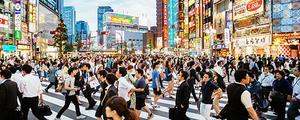WASHINGTON, D.C. -- Acknowledging that the global economic crisis is one of the most serious economic challenges they have faced, leaders from the Asia-Pacific Economic Cooperation (APEC) pledged in late November to "act quickly and decisively to address the impending global economic slowdown." Recent Gallup Polls suggest this can't happen soon enough for consumers in APEC member states in developed Asia: In 2008, majorities in most countries and areas see economic conditions as getting worse.
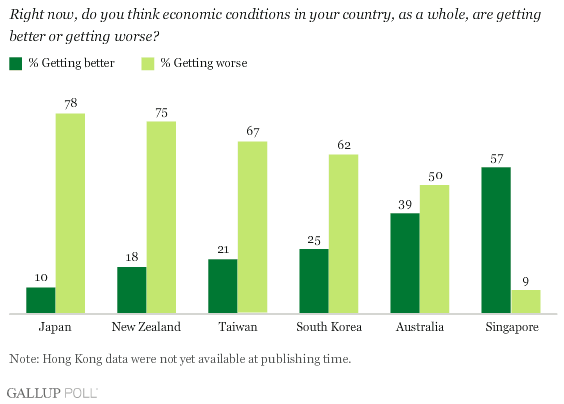
The global economic crisis is exacting a hefty toll on the heavily export-reliant region, where recession is either a threat or already a reality. The economies of Hong Kong, Singapore, Japan, and New Zealand are in recession, Taiwan's GDP just suffered its biggest contraction in years, and economic growth is slowing in South Korea and Australia. Gallup Polls in the region show consumer sentiment took a clear negative turn after the global slump began in 2007.
Recession Reality
New Zealand
In the second quarter, New Zealand not only slipped into its first recession in 10 years, but it also became the first country in developed Asia to do so this year. The country had enjoyed extended economic growth until tight credit conditions, high prices, and drought caused it to stall. This change of fortune is apparent in New Zealanders' attitudes about their economy. In June 2008, 75% of residents said conditions were getting worse, marking a huge increase from 2007 and 2006.
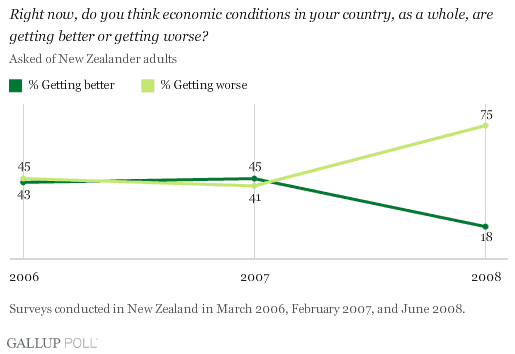
Japan
The No. 2 economy in the world, Japan, entered recession in the third quarter. Japanese consumer confidence started to falter in 2007 and Gallup quarterly polls in 2008 reveal that it continued to rapidly erode as global economic troubles deepened and their own economy flirted with recession. In September 2008, 78% said economic conditions were getting worse, which is a 42-percentage-point increase since 2005 and a 33-point increase since 2007.
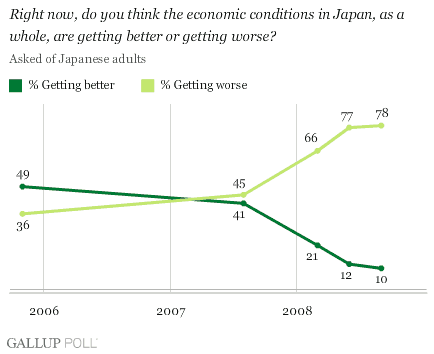
Singapore
Singapore, one of the wealthiest countries in Asia, also entered recession in the third quarter this year. The city-state is heavily reliant on exports, so the slowdown in international and regional trade has hurt wholesale trade and transport and storage sectors. Overall, few Singaporeans have ever typified economic conditions as getting worse. However, they have grown more pessimistic since 2007, when just 2% said things were getting worse.
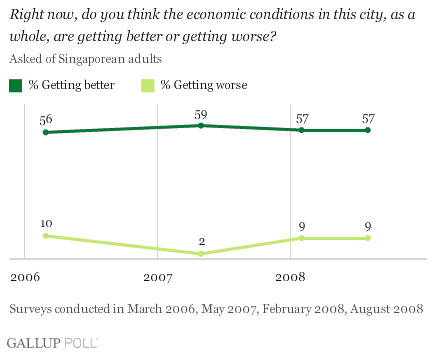
Recession Threat
Taiwan
Taiwan technically has not entered recession yet, but its overreliance on exports largely explains why its economy suffered the biggest contraction in seven years in the third quarter and the outlook remains bleak. The Taiwanese government plans to give each of its 23 million citizens vouchers to stimulate spending, but many may not be in a shopping mood. In October 2008, 67% of Taiwanese said economic conditions were getting worse, which is a modest five-point increase from 2006.
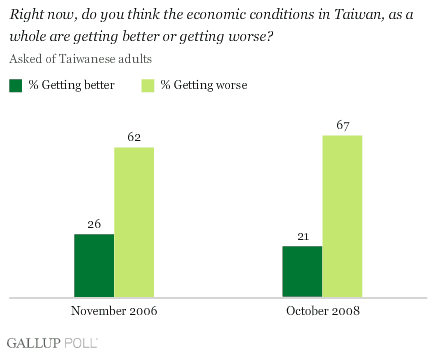
South Korea
South Korea is one of Asia's largest economies, but weakness in exports and the manufacturing sector, along with a drastically depreciating currency, has sharply slowed its previously phenomenal economic growth. In the third quarter, growth hit a three-year low and economists expect negative growth next year. In September 2008, 62% of South Koreans said economic conditions were getting worse, which represents a 23-point increase since 2006 and a 17-point increase since 2007.

Australia
Economic growth in Australia slowed in the third quarter, but so far this year, the country has not experienced negative growth. The situation may look different next year, as four of Australia's top six merchandise export markets -- Japan, the European Union, the United States, and New Zealand -- are in recession and activity in another, South Korea, is slowing. In June 2008, 50% of Australians said economic conditions were getting worse, which is a 12-point increase since 2005 and a 17-point increase since 2007. Trade with its No. 2 market, China, could prove to be the linchpin for Australia in the coming year.
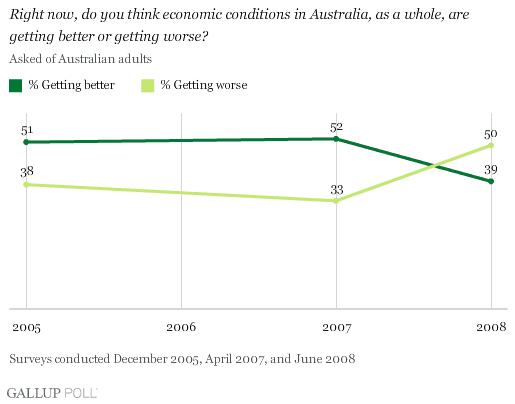
Looking Ahead
Governments across developed Asia have reacted to the recent economic turmoil with a mix of rate cuts and stimulus packages for businesses and consumers, but declining consumer confidence in the region could potentially hamper individual recovery efforts. Continued weakness in exports with major markets such as the United States and European Union will likely deepen domestic economic problems in the region, which is one reason behind APEC's renewed call for expanding free trade and easing trade barriers. Whether such trade measures can end the global crisis in 18 months, as APEC predicts, remains to be seen.
Survey Methods
Results are based on telephone and face-to-face interviews with approximately 750 to 1,500 adults Singapore, Taiwan, Japan, Australia, New Zealand, and South Korea in 2005, 2006, 2007, and 2008. For results based on the total samples of adults in Singapore, one can say with 95% confidence that the maximum margin of sampling error is ±3 to ±4 percentage points. For results based on the total samples of adults in Taiwan, one can say with 95% confidence that the maximum margin of sampling error is ±4 percentage points. For results based on the total samples of adults in Japan, one can say with 95% confidence that the maximum margin of sampling error is ±3 to ±4 percentage points. For results based on the total samples of adults in Australia, one can say with 95% confidence that the maximum margin of sampling error is ±3 to ±4 percentage points. For results based on the total samples of adults in New Zealand, one can say with 95% confidence that the maximum margin of sampling error is ±4 to ±5 percentage points. For results based on the total samples of adults in South Korea, one can say with 95% confidence that the maximum margin of sampling error is ±4 to ±6 percentage points. In addition to sampling error, question wording and practical difficulties in conducting surveys can introduce error or bias into the findings of public opinion polls.
